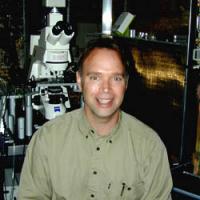
BG 49 RM 2A10
49 CONVENT DR
BETHESDA MD 20814
Dr. Smith received his B.S. degree from the University of Maryland and his Ph.D. degree from Johns Hopkins University. After postdoctoral research in physiology at Harvard University, Northwestern University, and a Humboldt Fellowship at the University of Göttingen, Germany, in 1991 he became a faculty member in the Department of Physiological Science and Interdepartmental Program in Neuroscience at the University of California, Los Angeles. Dr. Smith moved to NINDS in 1994 and become a Scientist Emeritus in 2023. His laboratory studied the functional and computational properties of oscillatory motor networks in the mammalian brainstem and spinal cord.
Dr. Smith's research is directed toward understanding brain mechanisms underlying the generation and control of innate motor behavior in the mammalian CNS. One of the fundamental challenges in contemporary neuroscience is to explain the generation of behavior in terms of the cellular and neural network properties of neural systems. Networks generating movement, particularly those producing innate rhythmic motor behaviors such as breathing and locomotion, provide important model systems to address this problem. He studies brainstem networks producing rhythmic breathing movements. One long-range goal is to explain the neurogenesis of respiratory movements at the molecular, biophysical, synaptic, and network levels. The respiratory network is one of the few neural systems that can generate behaviorally relevant patterns of neural activity in highly reduced preparations of the mammalian CNS. This attribute enabled his lab to develop unique in vitro preparations (e.g. see Koshiya and Smith, 1999), including brain slice preparations, that retain active respiratory networks, allowing concurrent measurements at cellular, synaptic, and network levels in the context of behaviorally meaningful network activity.
Dr. Smith's current research in vitro studies focus mainly on mechanisms generating the neural oscillation underlying the rhythm of breathing. This included conducting interrelated studies to determine biophysical properties, morphology, network architecture, and synaptic interactions of the rhythm-generating neurons in the pre-Botzinger complex, the brainstem locus of rhythm generation (Smith et al., Science 254: 726-729, 1991). The experimental techniques from his lab included whole-cell patch-clamp recording for studies of biophysical and synaptic properties, infrared and fluorescence videomicroscopy for real-time imaging of single cell and neuron population activity with calcium-sensitive dyes (Koshiya and Smith, 1999), and computational modeling of neurons, synapses, and networks (Butera et al., 1999).
